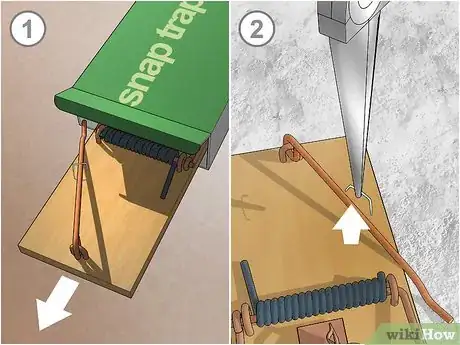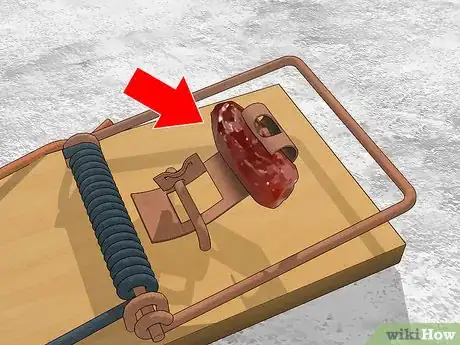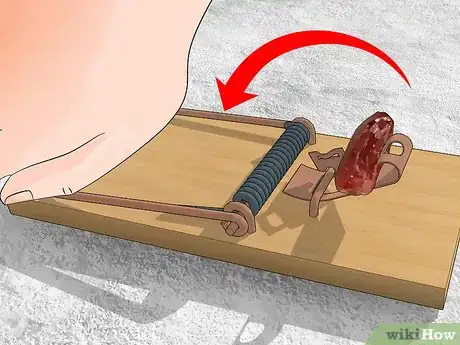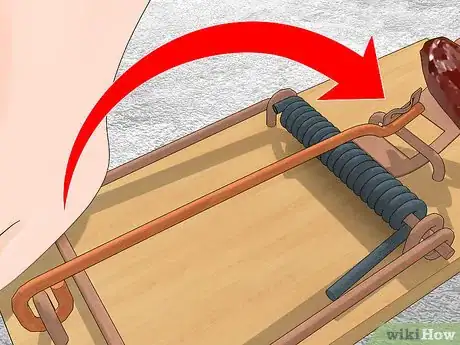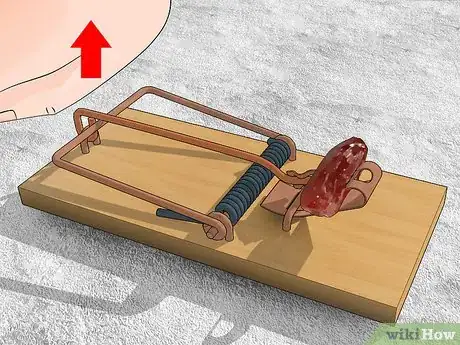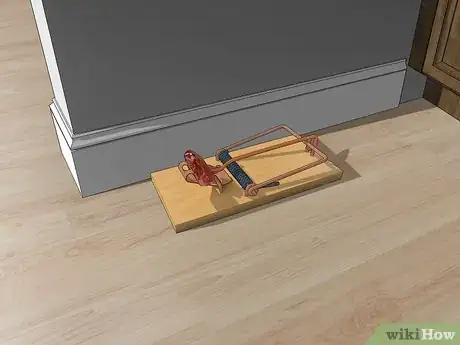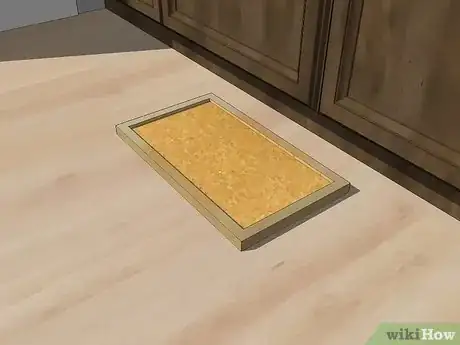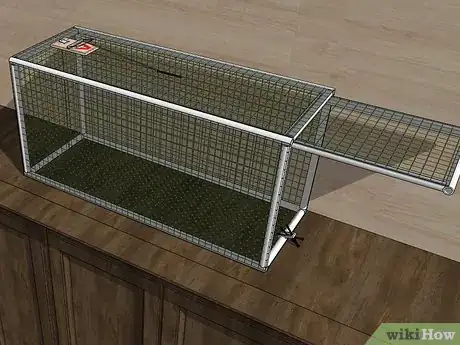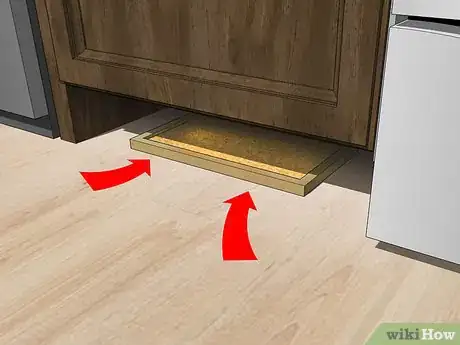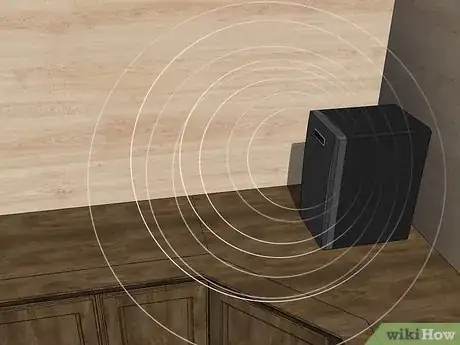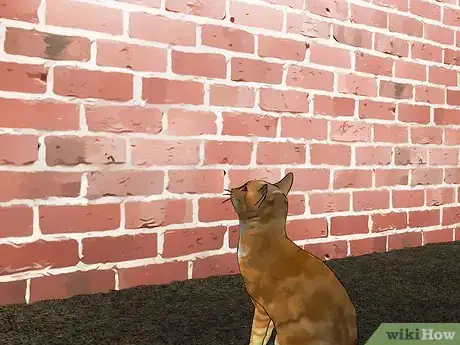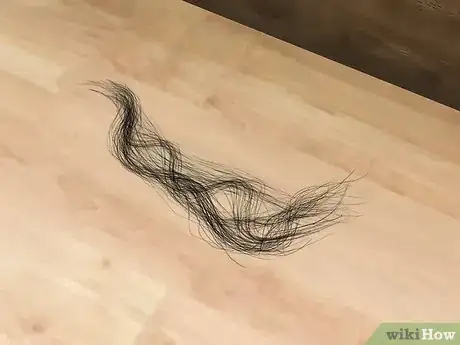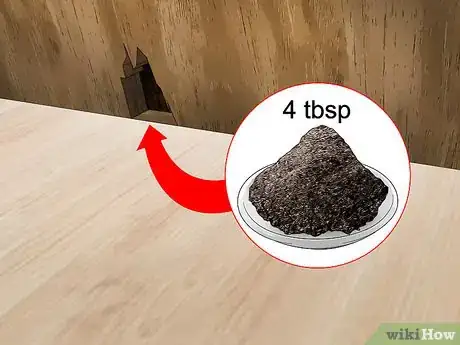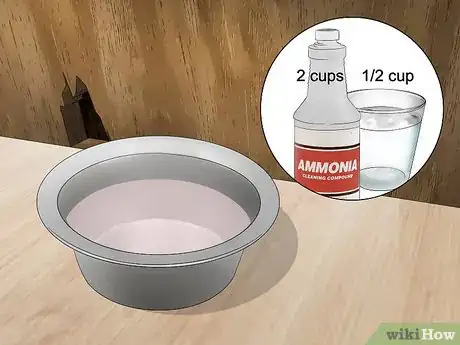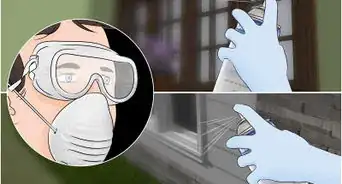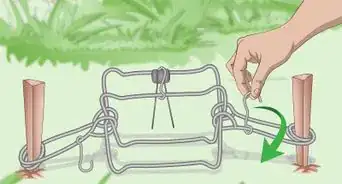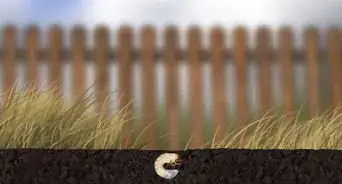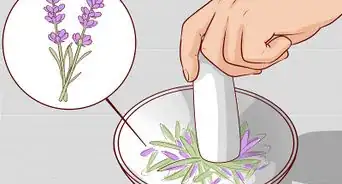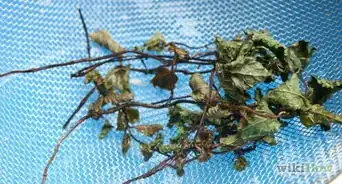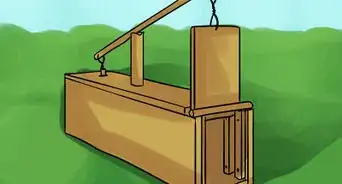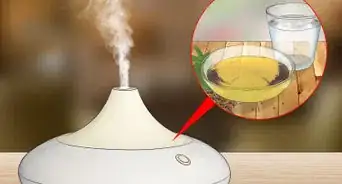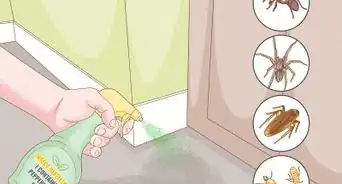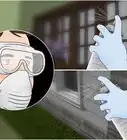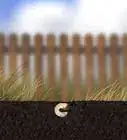This article was co-authored by Kevin Carrillo. Kevin Carrillo is a Pest Control Specialist and the Senior Project Manager for MMPC, a pest control service and certified Minority-owned Business Enterprise (MBE) based in the New York City area. MMPC is certified by the industry’s leading codes and practices, including the National Pest Management Association (NPMA), QualityPro, GreenPro, and The New York Pest Management Association (NYPMA). MMPC's work has been featured in CNN, NPR, and ABC News.
There are 10 references cited in this article, which can be found at the bottom of the page.
This article has been viewed 22,642 times.
Woodrats, also known as pack rats, are pests that are most active at night when they forage for food and items to build their den. If you have a woodrat infestation, you can control the population by using traps for rats in the house or natural remedies for rats located outside of your home.
Steps
Setting a Snap Trap
-
1Take the trap out of the packaging and unhook the arm bar. Use a set of pliers to remove the staple that holds the arm bar in place on the trap. Move the arm bar so that it's hanging off of the trap for the time being.[1]
- Snap traps are the most effective form of trap when used correctly.[2] If your trap comes with directions, make sure you take the time to read them.
-
2Place your bait on the copper bait pedal. Peanut butter is a popular bait for woodrats, but you can also use dried fruit, pet food, or nuts. To make sure the bait stays in place, you can use dental floss to loosely tie it to the pedal.[3]
- Woodrats are also attracted to nesting materials, such as cotton balls, yarn, dental floss, and twine. These can all be used as bait in place of food.
Advertisement -
3Pull the kill bar to the opposite side of the trap and hold it in place with your palm. Make sure to keep your fingers away from the baited side of the trap.[4]
- It will require some force to get the bar all the way to the other side. Get a good grip on the kill bar and make sure the trap is placed on a level surface where you can work.
-
4Hook the arm bar to the notch on the bait pedal. This will hold the kill bar in place until the bait pedal is triggered. Make sure the arm bar is all the way through the notch to avoid the trap going off without being triggered.[5]
- Take your time with this step, and make sure the kill bar is all the way flush with the trap. This will provide the bait pedal with the most force, increasing the chance of the trap killing the rat immediately.
-
5Remove your palm from the kill bar to add tension to the bait pedal. Make sure to keep your fingers away from the baited area of the trap. The kill bar is extremely powerful, and at this point has enough force to break a finger.[6]
-
6Place the snap trap perpendicular to a wall. Since rats don't normally run out in the open, it's best to place the traps near walls and in tight crevices that rats frequent. Place traps near places where you store food, as well.[7]
- Rats favor dark, damp places. You can place traps under kitchen appliances, under furniture, in cupboards and pantries, and in closets. Be careful not to trigger the trap when you're placing it.
Using Other Types of Traps
-
1Place glue traps to disable the rats. Glue traps are boards with adhesive on one side that makes the rat immobile, causing it to starve to death over time. You can set these traps anywhere that you know the rats are crossing on a regular basis. Simply place the board in a high-traffic location and check back 24 hours later.[8]
- Glue traps are known to be ineffective for some rats because they can gnaw off stuck limbs to free themselves.
-
2Set up cage traps to catch and relocate the rats in a wooded area. Cage traps are large traps that capture the rat while it's alive, allowing you to relocate it. Most cage traps come pre-built and require minor set up before placing the trap in a high-traffic location.[9]
- Open the door to the trap and place your bait on the bait hook attached to the door. For woodrats, nuts, peanut butter, dried fruit, dental floss (for nesting), and pet food are all recommended bait.[10]
- Set the trigger plate by attaching the trigger rod on the bottom of the plate to the baited hook that is attached to the door.
- Always relocate a rat to a wooded area during the evening, because they have bad eyesight and won't be able to find their way back to your home.[11]
-
3Place traps strategically throughout your home and yard. Cage traps work best outside or in large, open areas like basements or attics. Glue traps are recommended to be placed against a wall in high-traffic areas like cupboards and under appliances.[12]
- Glue traps and cage traps are less likely to harm children and pets, but still require a level of care when placing them. Make sure family pets aren't able to access cage traps, and place glue traps out of the reach of children.
Employing Natural Remedies
-
1Set up a speaker near a den where rats have nested and turn up the volume. Loud noises will cause a rat's ears to bleed, which kills them quickly. Set up a large speaker and turn on some loud music near the rat's nest. Playing the music for about 15-30 minutes should be enough time to cause ear damage.[13]
- This can also work for rats in the house, if they're nested inside of the walls. Simply place the speaker about 1 foot (0.30 m) from the wall and turn on the music.
-
2Have your outdoor cat hunt rats around the house. Cats can normally kill young rats that aren't as fast. You can “train” your cat to chase rats by getting toys that mimic the movement of rats and mice, which will give them some practice. In most cases, cats will have a natural hunting instinct.[14]
- It might take a few hunting sessions to kill a lot of rats, and most cats won't be able to catch older and faster rats.
-
3Place human hair near their nest to choke them. Since woodrats create nests, they often look for items like human hair to make their nest. However, ingesting human hair will cause rats to choke and die. Gather shedded hair from a brush or after a shower from a drain catch and place the hair near the nest.[15]
- This method only works if the rats eat the hair. If it isn't ingested, the smell of the hair might scare rats away for a short period of time. You might want to bait the rats into eating it by placing some pet food within the hair to entice them.
-
4Sprinkle pepper in a hole or nest where you know rats are living. Pepper acts as an irritant due to its strong smell, which rats hate. Sprinkle about 4 tablespoons of pepper into a rat's hole or nest to scare them off.[16]
- If the rats are in the hole, this can also cause them to choke and die.
-
5Scare off rats with the smell of ammonia. Ammonia also has a strong smell that rats despise. Mix 2 cups of ammonia with ½ cup of water in a large bowl and place the bowl in a place where the rats frequent.[17]
- When placing the bowl outside, but be aware that the ammonia might scare off other animals such as squirrels or birds.
- You can also place the bowl inside, but make sure it's away from children and house pets.
Expert Q&A
-
QuestionWhat's the easiest way to get rid of woodrats?
 Kevin CarrilloKevin Carrillo is a Pest Control Specialist and the Senior Project Manager for MMPC, a pest control service and certified Minority-owned Business Enterprise (MBE) based in the New York City area. MMPC is certified by the industry’s leading codes and practices, including the National Pest Management Association (NPMA), QualityPro, GreenPro, and The New York Pest Management Association (NYPMA). MMPC's work has been featured in CNN, NPR, and ABC News.
Kevin CarrilloKevin Carrillo is a Pest Control Specialist and the Senior Project Manager for MMPC, a pest control service and certified Minority-owned Business Enterprise (MBE) based in the New York City area. MMPC is certified by the industry’s leading codes and practices, including the National Pest Management Association (NPMA), QualityPro, GreenPro, and The New York Pest Management Association (NYPMA). MMPC's work has been featured in CNN, NPR, and ABC News.
MMPC, Pest Control Specialist Snap traps will be the most effective since they kill the rats instantly and have an easy cleanup.
Snap traps will be the most effective since they kill the rats instantly and have an easy cleanup. -
QuestionShould you poison rats?
 Kevin CarrilloKevin Carrillo is a Pest Control Specialist and the Senior Project Manager for MMPC, a pest control service and certified Minority-owned Business Enterprise (MBE) based in the New York City area. MMPC is certified by the industry’s leading codes and practices, including the National Pest Management Association (NPMA), QualityPro, GreenPro, and The New York Pest Management Association (NYPMA). MMPC's work has been featured in CNN, NPR, and ABC News.
Kevin CarrilloKevin Carrillo is a Pest Control Specialist and the Senior Project Manager for MMPC, a pest control service and certified Minority-owned Business Enterprise (MBE) based in the New York City area. MMPC is certified by the industry’s leading codes and practices, including the National Pest Management Association (NPMA), QualityPro, GreenPro, and The New York Pest Management Association (NYPMA). MMPC's work has been featured in CNN, NPR, and ABC News.
MMPC, Pest Control Specialist No, it's generally not a good idea to poison rats. It's dangerous for children, pets, and wildlife. Some animals might even eat the dead rats and get poisoned. Additionally, poison kills the rats quickly, and the decomposing rat can actually attract more rats to your home.
No, it's generally not a good idea to poison rats. It's dangerous for children, pets, and wildlife. Some animals might even eat the dead rats and get poisoned. Additionally, poison kills the rats quickly, and the decomposing rat can actually attract more rats to your home.
Warnings
- Never use poison to kill rats. It's dangerous for your children and pets, as well as wildlife who may consume the dead animals. Using poison causes rats to die and begin decomposing, which can attract more rats looking for food.[18]⧼thumbs_response⧽
References
- ↑ http://myhousepests.com/rats/wooden-rat-trap.html
- ↑ Kevin Carrillo. MMPC, Pest Control Specialist. Expert Interview. 22 October 2019.
- ↑ http://www.victorpest.com/advice/rodent-library/woodrats/trap-baits
- ↑ http://myhousepests.com/rats/wooden-rat-trap.html
- ↑ http://myhousepests.com/rats/wooden-rat-trap.html
- ↑ http://myhousepests.com/rats/wooden-rat-trap.html
- ↑ http://www.wildlifeanimalcontrol.com/rattrapping.html
- ↑ https://www.doyourownpestcontrol.com/trapping_rats.htm
- ↑ http://myhousepests.com/rats/rat-cage-trap.html
- ↑ http://www.victorpest.com/advice/rodent-library/woodrats/trap-baits
- ↑ http://www.wildlifeanimalcontrol.com/ratrelocate.html
- ↑ http://www.wildlifeanimalcontrol.com/rattrapping.html
- ↑ http://www.wildlife-removal.com/killrat.html
- ↑ https://www.today.com/home/rats-here-s-what-do-about-these-pesky-critters-t81701
- ↑ http://www.wildlife-removal.com/killrat.html
- ↑ http://www.outdoorliving.online/home-remedies-to-get-rid-of-mice/
- ↑ http://www.outdoorliving.online/home-remedies-to-get-rid-of-mice/
- ↑ Kevin Carrillo. MMPC, Pest Control Specialist. Expert Interview. 22 October 2019.
